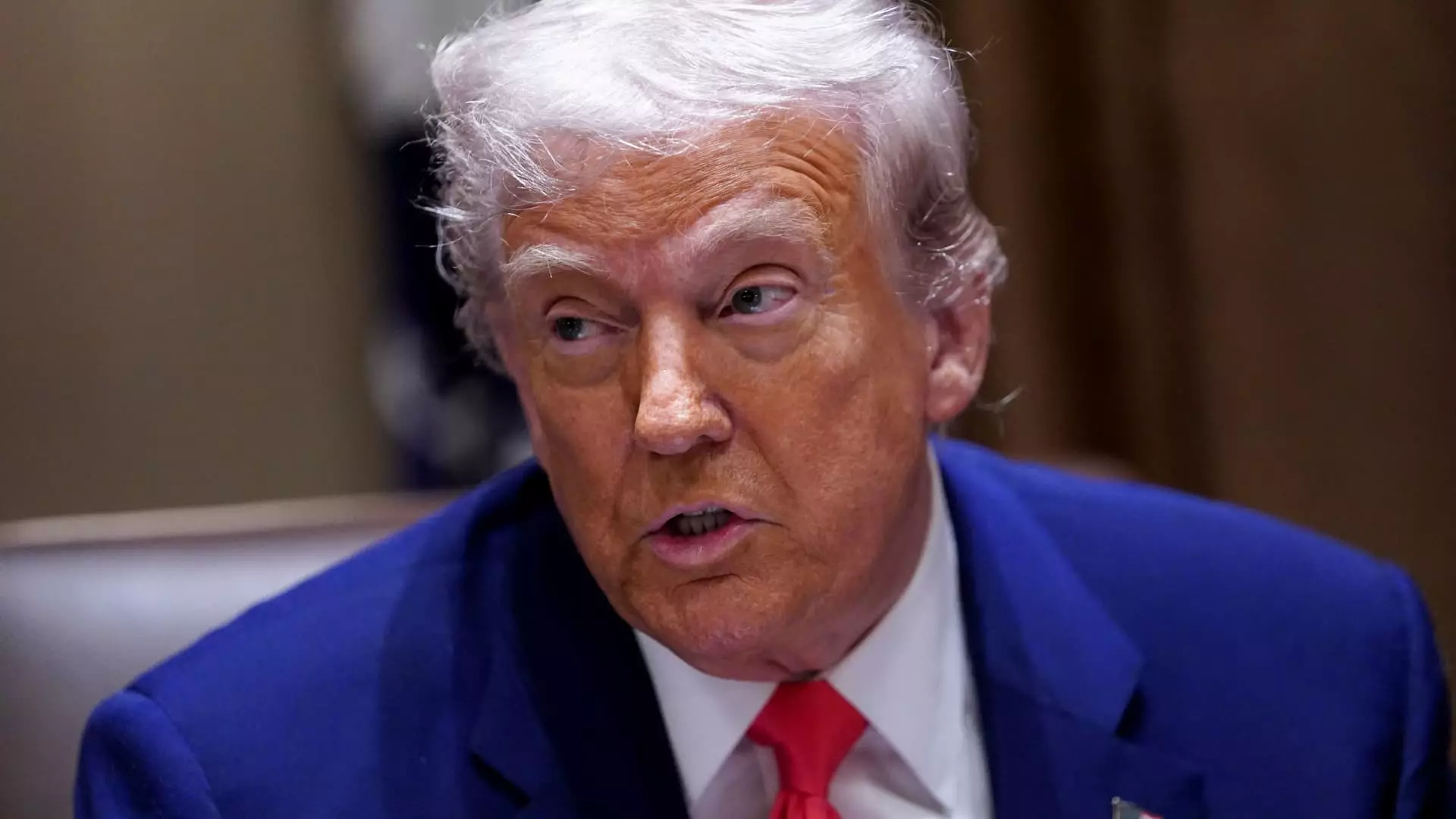President Donald Trump’s administration has taken an unprecedented step in implementing a staggering increase in tariffs on Chinese imports, raising them to a whopping 145%. This drastic measure, championed by White House officials, isn’t simply another piece of economic policy; it’s a radical shift that could fundamentally alter the landscape of U.S.-China trade relationships. As noted by economist Erica York, any tariff over a baseline of 100% could effectively sever the trade ties between these two economic giants. Indeed, the implications of such a move are profoundly troubling—not just for American consumers, but for the economy as a whole.
This isn’t merely an economic maneuver; it’s a declaration of war on the very foundations of free trade, a bedrock principle that has underpinned not just American prosperity but the global economy since World War II. The assertion that limited tariffs can protect national interests is a dangerous misconception that overlooks the interconnected nature of today’s markets and could result in catastrophic consequences not just domestically, but globally.
Immediate Market Reactions
The financial markets responded swiftly to this news, wiping out previously accrued gains as investors reacted to the specter of elevated tariffs. Following the announcement, market values plummeted, underlining the uncertainty that surrounds aggressive trade policies. As York indicated, the market’s recovery cannot be assured until there is clear resolution regarding tariffs, especially considering Trump’s claims of a “temporary” reduction on non-Chinese imports. The conditions set forth by Trump could unleash a ripple effect across multiple sectors of the economy, aggravating tensions and market instability.
With a looming potential for trade wars that may escalate, the stock market’s volatility appears only set to intensify. Combine that with Trump’s unwillingness to entirely rule out the notion of extending these aggressive tariffs beyond the initial timeframe, and investors are rightfully jittery. Business leaders and economists alike understand that while tariffs can provide temporary shielded benefits, they often lead to far more significant long-term costs.
The Economic Fallout
The reality of Trump’s tariff policies, however, extends far beyond mere political theater. According to estimates from the Tax Foundation, the new wave of tariffs could yield an additional $171.6 billion in federal tax revenue for this fiscal year. On the surface, this figure presents an attractive revenue source; however, it comes at the staggering expense of American consumers and businesses alike. This would represent the largest tax increase since 1993, effectively labeling the tariffs as one of the most regressive tax policies to date, affecting those at the lower end of the economic spectrum disproportionately.
The average American typically does not have the disposable income to absorb rising costs without serious repercussions, particularly in sectors reliant on imported goods. With estimates suggesting that tariff rates will reach levels not seen since the 1940s, a broader economic consequence looms ominously on the horizon. The question begs to be asked: Are these tariffs truly worth it? The answer for many economists is a resounding no.
China’s Stance: Resilience in the Face of Adversity
China, determined not to buckle under pressure, has responded in kind by raising its own tariffs on U.S. imports. This tit-for-tat approach signals the unwillingness of both countries to cede ground, portraying an increasingly adversarial dynamics that could escalate and lead to irreparable damage. China has shown it will not yield easily, asserting that any retaliatory measures will be firmly implemented.
This fragility in international relations exacerbates the unpredictability of the global marketplace. As tariffs climb, costs escalate, and supply chains falter, the ramifications could reach consumers swiftly, resulting in higher prices for everyday goods. This cycle of escalating tariffs and retaliations breeds instability, highlighting the futility of protectionism in an increasingly globalized world.
When the dust settles, Trump’s aggressive economic gambit reveals itself not as a strategic hope for a stronger U.S. economy but as a perilous gamble that threatens to unleash broader economic chaos, leaving middle-class families to bear the brunt of the fallout. An ill-conceived strategy disguises itself behind patriotic notions but reveals a glaring neglect for sound economic policy, risking years of economic progress for a fleeting sense of dominance.

